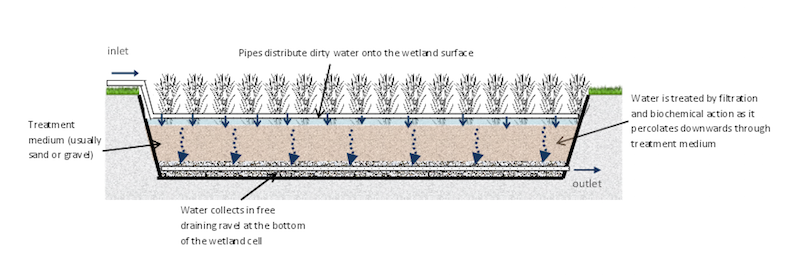
Vertical flow wetlands are quite a different design approach, in which water is applied to the top of the wetland. It percolates downwards through the planting medium, and is collected at the bottom. In some designs, the medium is designed to be saturated, (like a horizontal subsurface flow system turned on its side). More often though, they are operated as a highly aerobic system by applying water in “pulses” which saturate the surface of the wetland for a short time, and are then allowed to completely drain so the pores in the medium fill with air again. In this way almost all the wetland remains oxygen rich.
These “pulse loaded vertical flow” wetlands, sometimes called “compact vertical flow” wetlands are very efficient at oxidizing water, reducing oxygen demand (BOD) and ammonium. The size of wetland needed for oxygen limited reactions is only a fraction of that needed by other types of passive wetland system. Complete nitrification of domestic wastewater can be achieved with this type of system.
The specification of the planting medium and the distribution system is crucial with these wetlands. The medium must completely drain between doses to allow oxygen into the pore space, yet must allow sufficient contact time between the effluent and the medium. It is also an engineering challenge to distribute water of the surface of such a wetland effectively while avoiding damage to the planting medium. If designed by an experienced practitioner, these systems should last indefinitely without clogging. Geoff has led a Constructed Wetland Association project to develop a UK standard for this sort of wetland to treat septic tank effluent at small sewage discharges.